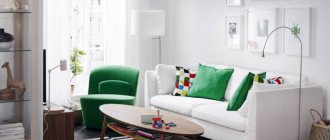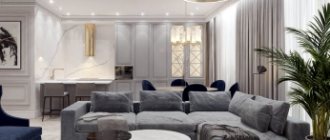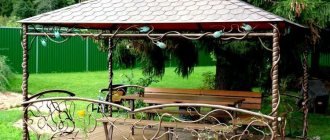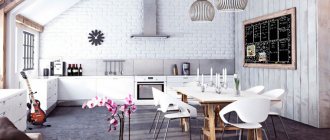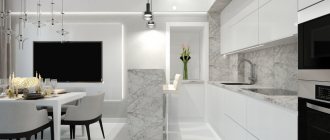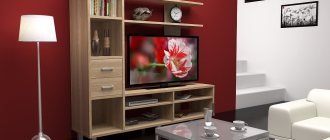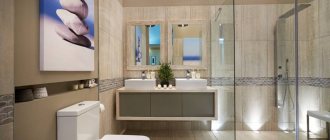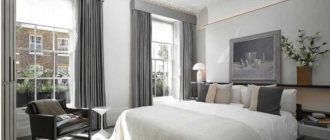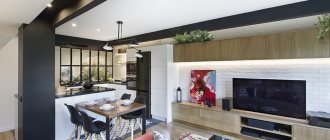Historical styles
Such styles in the interior are understood as trends, the emergence of which occurred naturally under the influence of various historical events. Let's look at them in order of appearance:
Baroque
The beginning of the 17th century was the heyday of royal interiors. The Baroque style in the interior is luxurious: it is distinguished by lush decor, a wide range of room dimensions, and a desire for grandeur. Wealth was literally put on display, hence the abundance of gilding, stucco, furniture made of precious wood, handwritten paintings, and frescoes.
In modern conditions, Baroque seems too pretentious: besides, it is impossible to play it in an ordinary apartment: the palace style requires suitable space.
Classicism
Contrary to the overly simulated Baroque, a classical direction in design appeared in the early 1600s: it affected not only the interior, but also painting, music, and architecture.
Classics are distinguished by strict forms, symmetry, and functionality. Although signs of the Baroque, such as high ceilings, expensive materials and chic decor, still remain, classicism is more about grandeur than pretense.
Nowadays this direction is traditional. It still strives for antiquity and does not follow fashion. Suitable for those who value a combination of luxury and comfort.
Colonial
The emergence of interior design
The term “interior design” arose around the mid-twentieth century, but the first concepts of interior design were developed in ancient centuries and were used to create the interior decoration of palaces, temples and houses of the local nobility, and with the growing prosperity of the population they became widespread.
Since its inception, interior design has involved working not only on the decoration of the room, but also on its ergonomics. With the advent of assembly line assembly and industrial production, interior design has become widespread.
Ethnic styles
The culture of each ethnic group has its own distinctive characteristics: this is expressed in painting, literature, traditional food and, of course, home decoration.
English
England is famous for its traditions and the interior style is no exception. The traditional English style, known today, was formed in the 19th century. Although the origins of the direction go back to the 16th-17th centuries, which coincided with the heyday of the Victorian era.
The interiors are as prim and reserved as their owners. Wood is considered the main material - it is used to create furniture, in the design of walls, floors, and ceilings. Small floral prints are also popular in upholstery or decoration: they can also be seen in textiles (curtains, pillows).
French (Provence)
Although the French are the founders of many styles, the image of the French village - Provence - is most associated with their way of life. It gains unique lightness due to light shades (white, beige, pastel), floral prints, and cute decor.
As in any rural interior, there is a lot of wood in Provence: but not in a natural “heavy” shade, but as light as possible - mostly white. Furniture, as in shabby, has the right to be shabby: marks of time make the space more cozy and homely.
Mediterranean
Every part of the Mediterranean interior is saturated with salty air, hot sun, and warm sea water. Thus, many countries have access to the sea; the style is divided into European (Greece, Spain, Italy) and eastern (Tunisia, Algeria, Turkey). The directions are radically different, but in the classical sense, the Mediterranean style is European.
The color scheme is light (white, blue, sand, with blue and red details). The main goal is to make the space bright and allow the sun to penetrate inside the house. To do this, the walls and ceiling are left in white colors - this color reflects and doubles the flow of sunlight.
Japanese
Japanese homes resemble their owners: structured, clean, functional. The style is characterized by minimalism - natural, discreet shades, a small amount of simple furniture.
Furniture stands out primarily for its height: the Japanese prefer low tables, at which they sit on equally low chairs or cushions. You can avoid the bed altogether by placing the mattress directly on the floor.
The second feature is unity with nature. The desire to be closer is expressed in the presence of doors from an apartment or house directly to the garden, as well as in the cultivation of bonsai and other flowers.
Chinese
Although Japanese and Chinese styles are Eastern, there is a huge difference between them. The first nuance that immediately sets a Chinese house apart from the list of others is the wooden grilles. Wood patterns decorate walls, furniture, ceilings, lamps, doors, and windows.
The second sign is a red light. The Chinese believe that it brings good luck, so they actively use it in their interiors.
The third point is the ceiling. In China, they are traditionally made multi-level, using luminous panels or lighting around the perimeter.
African
Certain elements of the style were actively used in the colonial direction, but interiors in the African style are good in themselves. The shades are warm, natural, muted: yellow, orange, red, green, beige. Black and brown are used for accents.
Wicker furniture, bamboo, animal prints and designs are trendy. Masks, drums, idols, chests, and ceramics are used for decoration.
Indian
As colorful as the country itself is, so are its interiors. Indian design is characterized by the use of bright shades of yellow, red, terracotta, blue, green, combined with wood texture and oriental prints.
Traditional patterns are “cucumbers”, symmetrical mandalas, flowers and birds: patterns are used on wallpaper, upholstery, and textiles. The latter, by the way, should be a lot: especially decorative pillows.
In addition to pillows, houses are decorated with carpets, Buddhist figurines, chests, carved screens, and comfortable poufs.
Russian
As in France, the most visual style in Russia is considered to be rustic. The differences between Russian country music can be seen in paintings, films, and cartoons: a wood-burning stove, wooden walls, carved shutters, embroidered or lace textiles (tablecloths, curtains, towels), homespun carpets.
The color palette is warm: yellow, orange, red goes well with natural wood.
Mixed styles
Few interiors today can be called “pure”: over the course of history, styles are mixed in one way or another, adopting each other’s features, and forming new directions. For example, Japandi, discussed in the first section, combines characteristics of Nordic and Japanese design.
But there are also trends that combine many styles at once:
Eclecticism
The main feature of an eclectic interior is that it can be different. Combine both similar and opposite designs. For example, a combination of Asian and European, vintage and trendy. In this case, the mixing does not occur chaotically.
All elements have a certain criterion by which they are combined: color, texture, style.
To avoid fragmentation and not spoil the idea, designers advise using a maximum of 3 styles and 4 colors as a basis: this way, each element will be in its place.
Fusion
From English the term is translated as fusion, which best describes his philosophy. The style originated in the 90s of the 20th century under the influence of globalization: it can be called a logical continuation of the colonial direction. At this moment, exotic oriental and African elements poured into the familiar European and American interiors.
The main rule of fusion is no rules! The finished spaces are multi-layered, bright, ambiguous: they combine not styles, as in eclecticism, but individual elements. For example, a carved baroque chair easily coexists with a modern frameless sofa and a fashionable coffee table.
We have analyzed, if not all, the most relevant design trends today. Use styles in their pure form or combine them with each other: the main thing is that you feel comfortable!
Modern presentation of the interior
The interior design of a modern apartment can be developed either in some popular style or in a mixed one. Today, one of the most popular interior styles is Rococo, which is distinguished by its rich decoration and a huge number of trinkets.
Photos of different interior designs:
You can try to do everything on your own, but in this case the end result may be unexpected, since it is impossible to create a design project without possessing a number of professional skills, such as design, color, and knowledge of building materials. Even if you manage to draw an image of the future interior on a piece of paper, then at the stage of bringing the project to life you will encounter a huge number of difficulties in the process of selecting the necessary materials, selecting furniture, organizing lighting, etc. Therefore, to create a high-quality design, it is best to immediately contact a qualified specialist. This solution will allow you to save a huge amount of time, effort and nerves.

